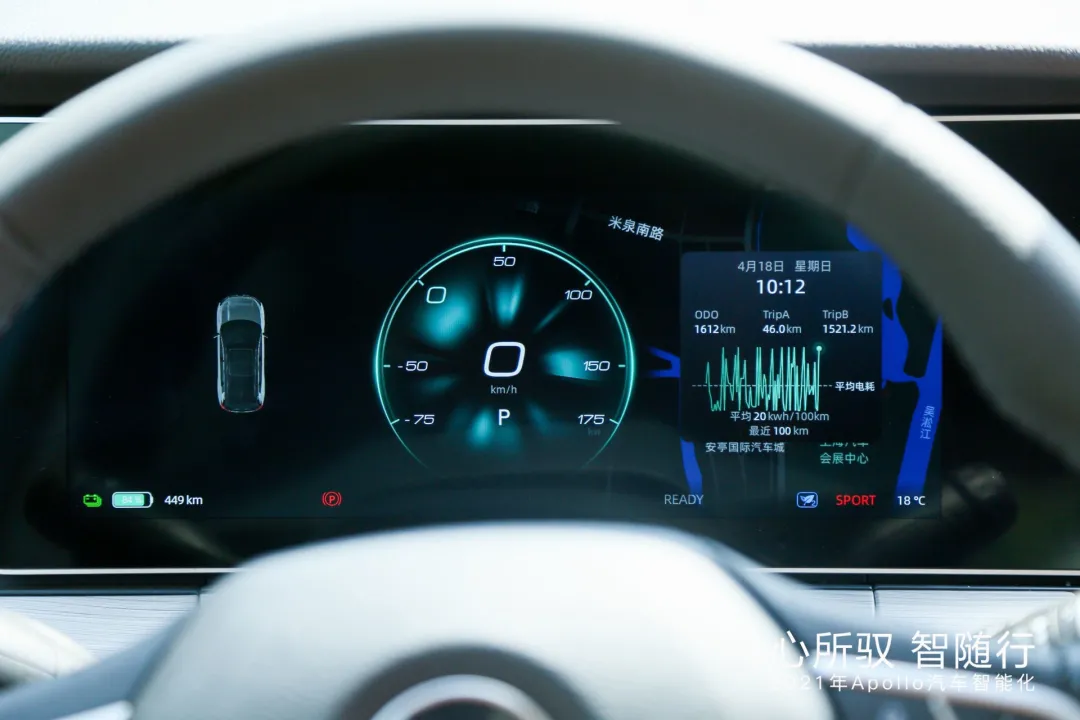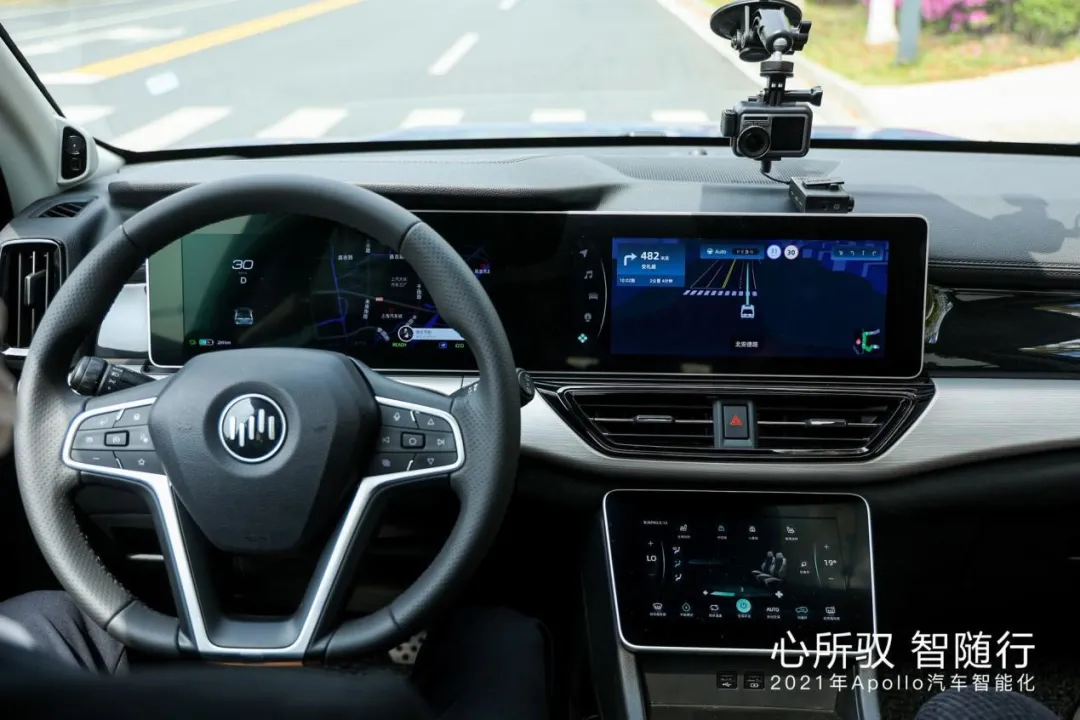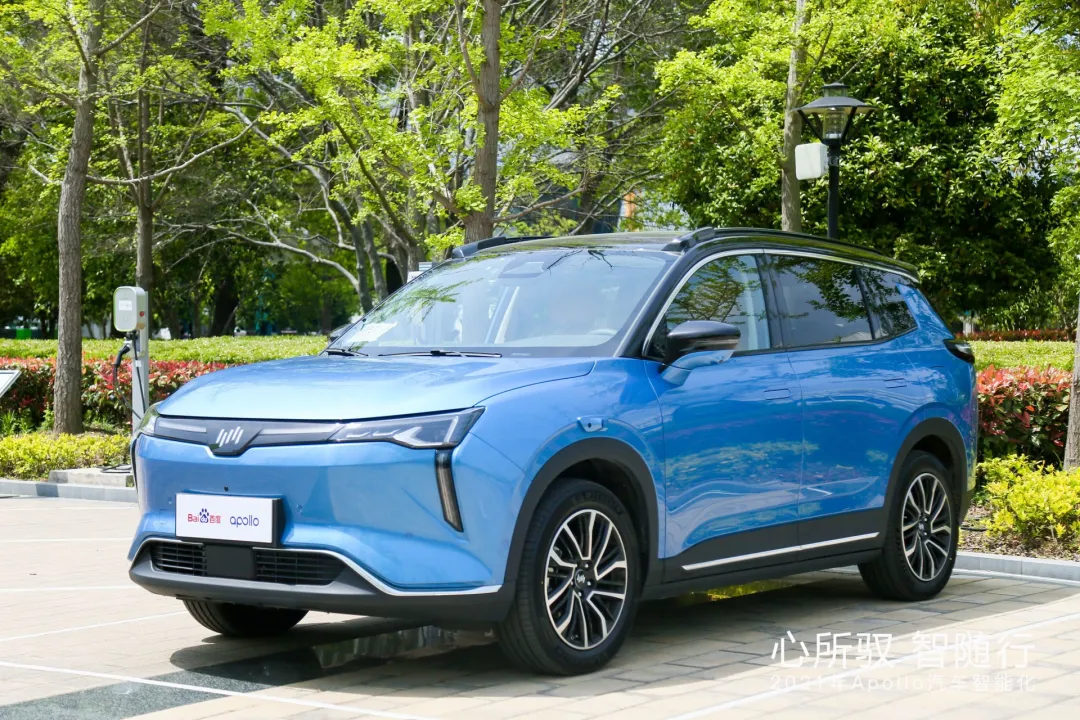Author: Yu Peng
As Elon Musk once again vaguely revealed that Tesla FSD Beta V9.0 will arrive no later than June, the future of self-driving cars that Tesla portrays in FSD (Full Self-Driving) seems to be just around the corner – bypassing the laser radar that the industry has been eager to adopt and directly using cameras to achieve fully autonomous driving performance.
Since the beginning of 2021, both inside and outside the industry, new car makers, large technology companies, and even drone giants have announced the launch of laser radar solutions. Despite its high dependence on hardware and extremely high cost, laser radar is still the mainstream choice across the industry.
Currently, known companies that have implemented pure visual city-level autonomous driving technology, besides Tesla’s closed technology ecosystem, the “just around the corner” FSD, include Baidu’s visual-based autonomous driving solution, Apollo Lite.
Perhaps because Baidu has also entered the field of visual autonomous driving, which is more technologically difficult but hardware more controllable, Tesla’s China regional president was caught visiting Baidu’s Apollo booth at the Shanghai Auto Show on April 19.
Likewise, today, Baidu’s Li Zhenyu announced that ANP mass-produced cars can be purchased this year. Moreover, in the second half of 2021, Baidu Apollo’s autonomous driving will usher in a production peak, with a new model launching every month.
With 6 cars in 6 months, using the visual capabilities that Tesla has always been proud of to unlock “autonomous driving”, Tesla should feel nervous too.
The Shanghai Auto Show 2021 has begun, and Baidu’s light sensor, light computing, and strong perception autonomous driving solutions are just around the corner.
Three key words: experience, implementation, mass production
On April 17, 2021, Baidu opened its smart driving products and autonomous parking AVP (Apollo Valet Parking) for media to experience in a W6 ANP test vehicle that has all of the AVP + ANP product capabilities, allowing for a complete driving scenario from remote vehicle summoning (AVP) to city road navigation assistance driving (ANP) to the car parking itself (AVP).
-
During the test drive of approximately 11 kilometers, the ANP assisted driving system drove safely within the range of the approaching speed limit, on the premise of ensuring safety.
-
It is well known that urban road conditions in China are relatively complex. Facing the “selfish” driving style of delivery drivers, ANP system responded steadily and did not suddenly “fail”.
-
The overall driving style of the test vehicle tended to be stable and safety-conscious. Starting, accelerating, changing lanes, and parking were all “smooth”, and there was no “push back” feeling that some drivers with a more aggressive driving style often experience.
-
The visual interaction of the ANP system tended to be reasonable. Pedestrians, vehicles, road edges, lane lines, and surrounding environments encountered on the road can be presented visually, and the improved perception ability brings a reassuring sense of safety.

Summary:
We noticed that through the externally mounted visual camera on the vehicle body, the visual restoration of the dynamic road conditions within a certain range was achieved on the car’s screen, including pedestrians, motor vehicles, and non-motorized vehicles. This expands the driver’s dynamic perception range from individual points and surfaces to relatively complete spatial cognition, and the advantages brought in driving decision-making cannot be ignored.
The ANP’s control of speed limits is also impressive. Even if the road ahead is wide open, the system does not “let go” and drives steadily within the speed limit. For some drivers who are used to “playing games” with road speed limits, they may need some time to adjust.
We believe that for the relatively complex road conditions in China, both the vehicle and the driver are equally important.
As a pure visual perception-assisted driving solution, the ANP system’s grasp of lane changing and other movements, emphasis on safety distance and field judgment, makes the driving experience in urban areas very close to that of human “old drivers”.

Baidu’s Confidence and Caution: Combining Hardware and Software
As the world’s first and only full-scenario pure visual automatic driving mass-produced solution for complex urban roads in China, Baidu Apollo ANP mainly comes from the Apollo Lite technology which is downgraded from L4 level and used for L2.5 level intelligent assisted driving products in driving scenarios such as open urban roads and highways.
This is different from Tesla’s FSD and XPeng NGP, which focus more on closed product lines in loop and high-speed environments.The environmental recognition of the ANP system mainly relies on visual algorithms, while the precise positioning and navigation of vehicles in the macroscopic level relies on the accumulation of Baidu in high-precision maps.
There are not many domestic mapping companies with Class A surveying and mapping qualifications, and Baidu is one of the “Three Great Families”.
As we all know, high-precision maps are the data foundation of automatic driving perception layer and decision-making layer, and they are also indispensable in ensuring driving safety. This makes the local advantages of manufacturers cooperating with Baidu more apparent. In addition to the WmAuto W6 test vehicle experienced this time, Baidu’s high-precision map has been adopted by car companies such as NIO, GAC and Great Wall.
On this WmAuto W6 ANP test vehicle, Baidu Apollo equipped it with a 12V5R12S sensor solution: 12 high-definition cameras, 12 ultrasonic sensors, and 5 millimeter-wave radars working together. Baidu ANP’s hardware sensors and ultrasonic radars share hardware with AVP’s hardware sensors. At the same time, the calculation unit ACU also shares hardware components.
As Baidu’s independently developed core computing unit, ACU version has iterated from “Wuren” to a higher level of “Sixi”, with higher computing power, lower power consumption and better stability. The WmAuto W6 ANP test vehicle open for a test ride this time is equipped with the “Sixi” version.
Baidu’s confidence stems from its long-term business layout. Its L4 level lidar solution has long been completed testing and the model has been put into operation in many places. As of now, Baidu has started fully automated driving tests in Beijing, Changsha, Cangzhou, and Silicon Valley, and is about to begin carrying passengers operation.
Baidu Apollo leader Li Zhenyu: Openness and Flexibility, and the Combination of Hardware and Software
In recent years, Baidu has emphasized that it is an artificial intelligence company. In the field of automatic driving, Baidu has also maintained its openness as a technology company.
In the media group interview on the afternoon of April 19, Baidu Group’s Senior Vice President and General Manager of the Intelligent Driving Group Li Zhenyu told GeekCar about some of the latest developments and stories behind them.
GeekCar:
Can you introduce the latest developments in Baidu’s cooperation with automakers at this auto show, and what are the main functions and capabilities?
Li Zhenyu:
We emphasize the “real experience” of automatic driving because we, including everyone, have long discovered the “bugs” in the field of automatic driving: it cannot completely eliminate manual intervention.
Now that our technical capabilities are sufficient, we can announce some new developments.
In the field of unmanned autonomous parking (AVP), our actual experience may be slightly slower. In fact, the parking lot environment is also complex, and some imperceptible situations, such as sudden appearances of children, small animals and so on, also need to be taken into consideration.Apollo’s solution is a perfect fit for China’s complex urban road conditions. Our on-road testing mileage has exceeded 10 million kilometers.
The main considerations for our ANP system to adopt a pure vision solution are vehicle specifications and cost. Vehicle specification is a good thing as everyone knows. On the other hand, the price of LiDAR is generally high, and we have had in-depth contacts with many leading companies in the LiDAR industry, which has further strengthened our determination to adopt a pure vision solution.
Our goal has always been to achieve “efficient co-driving of humans and vehicles.” What you’re seeing today is because now we have the confidence to show it to you.
We also have an advantage in high-precision maps and vehicle-road coordination. Vehicles can exchange information in real-time, and we can achieve minute-level updates. Temporary traffic control, changes in entry and exit, unforeseen situations, and other information can be quickly synchronized. These cannot be achieved with LiDAR alone.
Over the next four years, Apollo hopes to better support developers and OEMs. Traditional automakers with smart upgrade needs and OEMs with structured upgrade demands can all receive help from Apollo.
The industry is still searching for a balance between the technical leadership, mass production feasibility, and ecological sustainability of self-driving technology.
Apollo refers to its own solution as a Lego-style intelligent car solution, and naturally hopes that partners can choose their desired combination on a completely open platform, just like Lego.
For OEM manufacturers, even if they want to equip their own ten-thousand-yuan entry-level vehicles with Baidu’s visual assisted driving system, it is theoretically feasible. However, the LiDAR solution is obviously awkward. This allows more and more third-party manufacturers to use the ANP system to help them create and achieve differentiated competitiveness that fits their own and user positioning.
In conclusion, Tesla and Elon Musk have always been a topic that the industry cannot ignore. People are discussing how they can replicate or surpass Tesla’s model, but overlook the fact that Tesla’s leader is a cross-disciplinary genius.
We believe that there is not only one path to the ultimate form. For the industry, what is needed is not only layout and technology but also responsibility and commitment. The trust of society in the industry and the safety of users’ lives cannot withstand repeated betrayals.
For the rapidly developing domestic market, users are often more pragmatic, and the industry players and potential players also need to be more pragmatic.In the pursuit of technical inclusiveness, Baidu has been making tremendous efforts. In the latest progress update, Baidu Apollo has established partnerships with over 70 global auto brands. Currently, more than 600 car models have been equipped with Apollo’s intelligent automotive products.
During the group interview, Li Zhenyu used the metaphor “many hands make light work” to describe Baidu Apollo’s cooperative attitude. His joy was evident in his words.
This article is a translation by ChatGPT of a Chinese report from 42HOW. If you have any questions about it, please email bd@42how.com.
